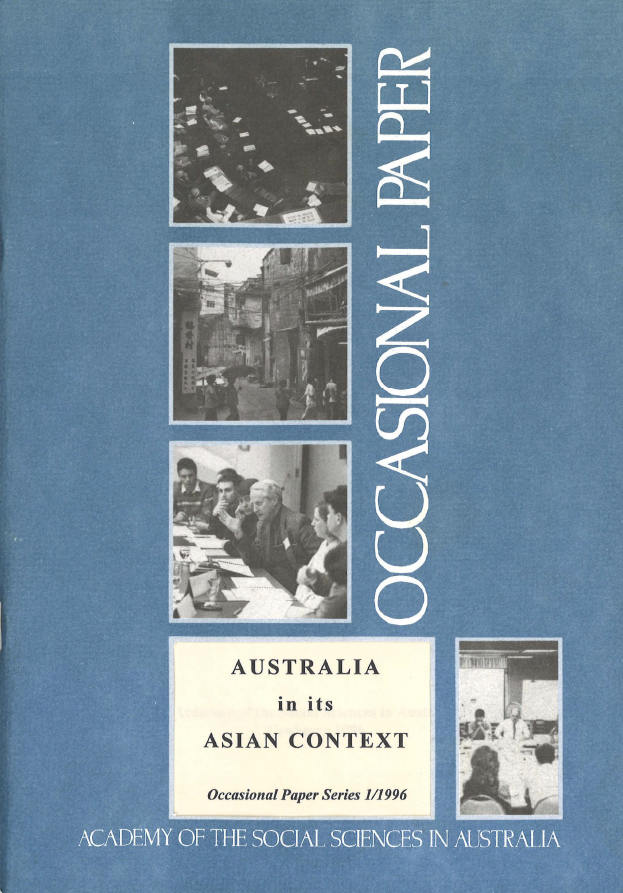Higher education in Australia has in recent years been seriously underfunded. The 160,000 students who, having coped with large classes, too few tutorials and over-stretched staff, graduate annually, and the three quarters of a million students and staff who currently work under pressure in the universities, would certainly agree. This view is also held by many well informed observers. Indeed, it is a view that has been clearly expressed by the Minister for Education, Training and Youth Affairs (see his leaked Cabinet submission of October 1999) as well as by the Leader of the Opposition (see his various speeches on the knowledge nation during 1999 and 2000).
However, unless there are major reforms, short term increases in government funding will not, in themselves, be sufficient to ensure that Australia’s universities provide an adequate foundation for a just and democratic society and a flourishing economy. In the absence of reform, government policy for higher education will continue to be unduly influenced by political and electoral considerations without expert, informed and objective input to the development and administration of higher education policy and programs. The institutions will remain vulnerable to short term changes in government funding (consider, for example, the 6 per cent cut over the years 1997-2000). Moreover, additional resources for higher education will tend to be spread thinly over the whole system. This will ill serve the twin purposes of improving access to higher education for the generality of the Australian population and fostering scholarship and research among high achieving students and distinguished academic staff – purposes essential for the advancement of the Australian people in the twenty first century. Also, the institutions will continue to be required to work within the straitjacket of policies imposed centrally – policies which restrict the autonomy of the universities and inhibit that diversity among institutions which is essential for a vibrant and evolving educational system.
In the light of these considerations, I see five aspects of higher education in Australia as being in need of urgent reform. These are:
- government/institution relations
- funding undergraduate courses
- funding research
- funding research training
- promoting excellence in honours teaching, research and research training.
The present administration of the higher education system in Australia is highly centralised with a concentration of authority over the system as a whole in the hands of a government department – the Department of Education, Training and Youth Affairs (DETYA). Higher education policies have a strong flavour of centralised planning with ever increasing emphases on measurable outcomes and quantitative performance indicators. These are necessarily short term and frequently misleading, and are at the expense of content, process and long term perspectives.
In the economic world, centralised planning has seldom proved successful: decentralised markets have proved a much more effective way of producing and distributing goods and services. The case for a decentralised system for higher education is very strong, and is made all the more persuasive by the fact that the Commonwealth government’s direct contributions now constitute only about one half of aggregate university revenues. Such a system would strengthen the autonomy of the institutions and protect their intellectual freedom. Autonomous universities would determine their own priorities. Generally a plurality of priorities is more likely to achieve high quality outcomes for the nation than a single set of priorities laid down centrally. Thus, decentralisation and a plurality of priorities should underpin reforms. Of course, the institutions would still be expected to have regard to broad national objectives articulated by the government.
The manner in which the government receives advice on higher education issues, the nature of that advice and the context in which government policy, programs and funds are administered, require reform. The government needs objective advice unaffected by political/ideological and political/electoral considerations and by the pressures of lobby groups. It cannot receive such advice from a government department subject to ministerial direction and the lobbying of individual institutions. The advice needs to be based on sound knowledge and an understanding of how universities operate and of their role in society. Much more open, objective and informed arrangements are required. Likewise, for the preservation of institutional autonomy, the universities need a ‘buffer’ body to stand between them and the government.
There would be general agreement that the current funding arrangements for higher education are, in the long run, untenable. In particular, the reduction in government support since 1996, and the salary increases arising from enterprise bargaining which have not been fully funded by the government, have forced the institutions to enrol students beyond target loads to attract marginal funding and/or to shed staff. Either way, academic staff/student ratios have grossly deteriorated.
In fact, since 1996 staff/student ratios have worsened by almost 20 per cent. They now stand at higher than 1 to 18. Twenty years ago they were about 1 to 12. Over the same period teacher/pupil ratios in schools improved considerably and this improvement has been largely maintained despite budgetary pressures. If the universities are not given greater financial support and some degree of control over revenues available for undergraduate teaching, enterprise bargaining will eventually drive further declines in staff quantity and quality and the Australian universities will sink into a morass of mediocrity. As it is, many classes are now far too large, and staff/student contact has diminished; academic staff have inadequate time for preparation and study, and morale is low. In the international market for top quality staff, the Australian universities are becoming increasingly uncompetitive. This will have serious long term implications for the quality of our universities’ research and their international standing.
The universities have been active, and reasonably successful, in seeking alternative sources of revenue, but it is important to emphasise that these sources are usually committed to particular activities and are not available for the core university business of teaching Australian undergraduates. In particular, revenue from international students has become a significant element in institutional budgets but the profits from this activity over and above the costs incurred are small.
The funding of research and research training is also due for reform. The creation of the unified national system of higher education in 1988, which has resulted in there now being 37 universities, each striving to build up research activity and research enrolments, has tended to spread resources too thinly and to endanger standards. A boost to resources and a greater concentration of research and research training in each discipline around the most able researchers are both essential.
To restore government funding to the 1996 level in relation to current enrolments would require an increase in operating grants of roughly $1 billion per annum (approximately a 20 per cent increase). The restoration of this funding should not be distributed simply in proportion to operating grants but should be directed mainly towards achieving a greater concentration of honours teaching, research and research training in each discipline. This might be achieved by feeding a significant part of additional funding into schemes for both institutional and competitive research grants (see section 4, below). I should emphasise that such concentration should be on a discipline not an institution basis.
The reforms that I propose are discussed below. They should be pursued whether or not significant additional funding is forthcoming.

